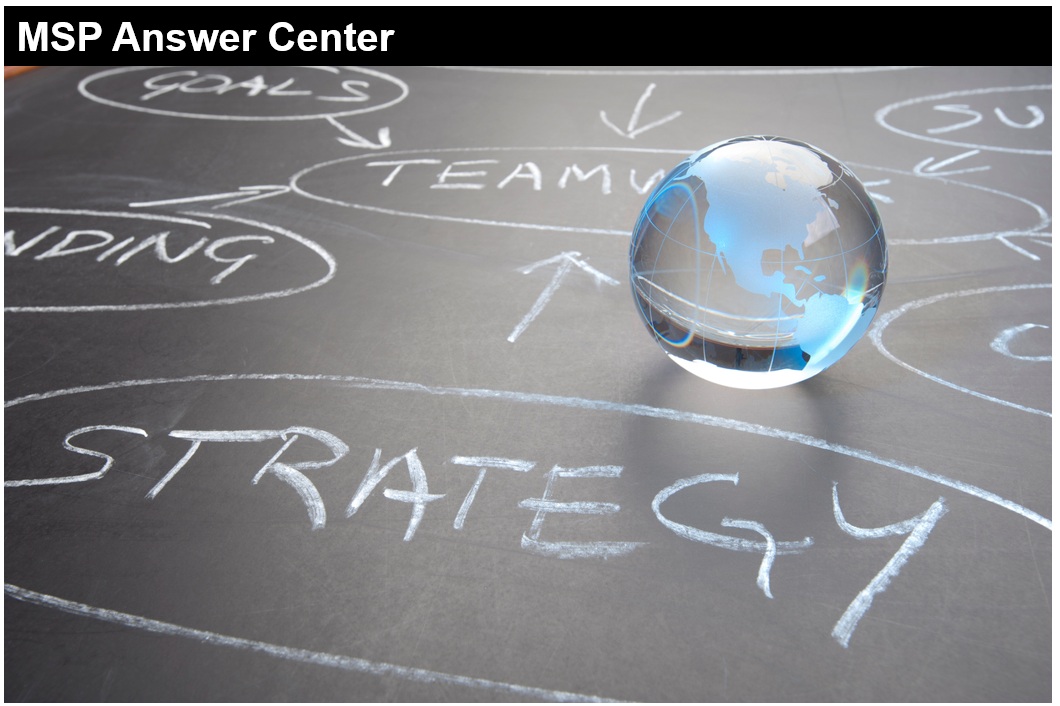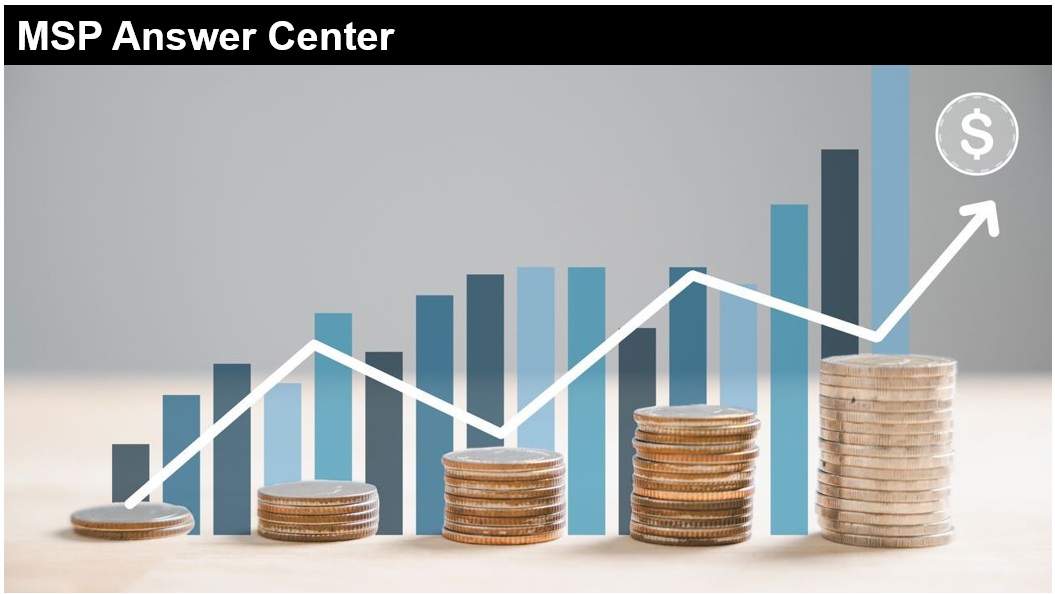Several financial and operational metrics are characteristic of best-in-class performance. As an MSP owner, it is important to know where you stand in relation to best-in-class peers. This way, you know which levers to focus on to make the fastest progress possible.
Along with looking at best-in-class performance from a profitability perspective, it’s also important to focus on some of the key drivers.
Insights were gathered from conversations with channel participants, like Peter Kujawa, executive vice president and general manager of Service Leadership and IT Nation for ConnectWise. Along with that, LinkedIn data and anecdotal evidence from MSPs helped to create some details on what constitutes a best-in-class MSP.
Revenue Growth Rates
In the three years following Covid, the MSP industry experienced 15%–20% growth rates due to three key drivers:
- The shift to remote work, which immediately increased the demand for cloud-based support solutions and greater cybersecurity capabilities
- A strong post-Covid economy, which resulted in robust growth for small and midsized businesses (SMBs) — and more users at MSP clients
- The surge in digital marketing, which made it possible for MSPs to reach out to a much wider network of clients than they had been able to in the past
As a result, demand surged for outsourced IT support, new client acquisitions, and expanded service delivery. This is particularly true for firms positioned to deliver scalable, remote-friendly managed services.
However, revenue growth rates have since begun to normalize. Post-Covid managed services revenue growth has returned to 10%–12% annually. That is in line with the long-term average for the sector.
Sales and Marketing Productivity
An MSP’s ability to generate organic client growth is a significant performance factor. That’s because in this sector, most MSPs rely on inbound referrals to grow their businesses. Growth is a consistent challenge.
Top-performing MSPs invest time and effort into hiring and onboarding the right people. Sales teams are effective only if they have accompanied the founder on sales calls to understand what makes their MSP unique.
Compensation structure is also key. A commission-only compensation structure may encourage sales professionals to prioritize selling to any clients that will buy just to achieve their individual targets. This, in turn, can lead to the MSP building a low-quality book of business.
Best-in-class MSPs have well-documented lead generation and sales processes that lay out their approach to generate marketing qualified leads (MQLs), convert MQLs into sales qualified leads (SQLs), and SQLs into clients.
KPIs and Referrals
Best-in-class MSPs track sales and marketing KPIs. This includes:
- Lead generation and conversion rates
- Cost of client acquisition
- Customer lifetime value and their sales and marketing ROI. They will know their ROI metrics across their various lead generation channels.
 KPIs can vary significantly across even top MSPs due to differences in the product mix, client mix, geography, and outreach strategy. However, best-in-class MSPs systematically track their KPIs, and they know the profitability of their sales and marketing strategies.
KPIs can vary significantly across even top MSPs due to differences in the product mix, client mix, geography, and outreach strategy. However, best-in-class MSPs systematically track their KPIs, and they know the profitability of their sales and marketing strategies.
For most MSPs, referrals are often one of the most productive ways to get clients. Top MSPs will run client satisfaction surveys to identify their best clients. They will ask clients for referrals at networking events and during quarterly business reviews.
The best MSPs are actively involved in their communities and consciously build client relationships with centers of influence in their communities. These include schools, libraries, hospitals, and community banks.
The benchmark sales and marketing spend from top MSPs is roughly 14% of gross margin dollars. This figure holds whether the founder handles sales and marketing themselves, or if sales and marketing is a separate team.
Founder-led MSP Challenges
A frequent issue among founder-led MSPs is the failure to properly devote the founder’s time to sales and marketing expenses.
In many cases, founders spend up to 50% of their time on lead generation, client meetings, or proposal development. Yet, none of that time is reflected in the sales and marketing section of the P&L. It’s typically all allocated to the general and administrative (G&A) expenses instead. This results in underreported sales and marketing costs, and skews profitability metrics.
Most founders also lack formal training in structured sales processes and modern marketing strategies. As a result, many would benefit from outsourcing marketing functions to specialists, such as fractional CMOs, outsourced SDR teams, or marketing agencies. They bring expertise, rigor, and measurable ROI to the MSP’s go-to-market efforts.
Best-in-class firms stand out due to the output of their sales investment. Effective sales engines have teams that:
- Differentiate between “hunters” and “harvesters”
- Are tightly managed
- Include performance tracking across sales representatives and campaigns
- Ensure that every dollar spent on marketing yields a measurable return
Gross Margin Performance
Best-in-class MSPs consistently generate gross margins of about 50% on managed services.

Madhur Duggar
To properly calculate gross margin, an MSP should include all costs of delivering services. This includes the tools needed to manage and deliver services. It also includes wages of front-line technicians, service managers, project managers and engineers, and even post-sale client account managers — those needed to support services.
These roles are fundamental to service execution and should be treated as part of the cost of goods sold (COGS), not G&A expenses. Many MSPs inflate gross margin figures by excluding these costs. For project-based services, where timelines are more constrained and scope can fluctuate, the best-in-class gross margin averages 37.5%.
Service Productivity and Efficiency
A critical metric tracked by Service Leadership is the Service Multiple of Wages, which captures how much service revenue is produced per dollar spent on service wages. Best-in-class firms generate nearly $3 in service revenue for every dollar spent on labor.
In contrast, firms in the bottom quartile typically generate under $2, revealing inefficiencies in technician use, poor ticketing workflows, or pricing misalignment.
EBITDA Output and Margins
While EBITDA margins can vary depending on firm size and operating structure, best-in-class EBITDA margins run at about 20% for MSPs.
Leading MSPs seek the right balance between growth and margin. Those with a highly effective growth strategy can choose to funnel more of their margin back into sales and marketing, if that is working for them. It is important to look at margins together with how the MSP is performing on the growth front.
Does Location Matter to Be Best in Class?
Interestingly, geography does not appear to affect the likelihood of becoming best in class. Rather, top-line opportunities or challenges in a geography are often counterbalanced by operating costs and competition.
Rural MSPs may have lower labor costs, but they also tend to have a lower density of businesses per MSP. As a result, they struggle to find talent.
Meanwhile, metro MSPs have a higher density of businesses and greater access to a broad talent pool. But they face higher competition and wages. These dynamics tend to balance out in the end.
That said, geography can matter for the growth potential of an MSP. Not all markets are created equally or grow at the same pace.
A study based on LinkedIn data of the number of SMBs with more than 20 seats per MSP found that while this ratio was 55 on average across the U.S., it varied significantly across the country. States like Tennessee had a much higher ratio than other states like Virginia.
Understanding a region’s growth potential should matter for valuation.
Does Size Matter When Becoming Best in Class?
One of the key insights from benchmarking service providers like Service Leadership is that size does not guarantee success. Rather, fundamental execution disciplines drive differentiation, such as:
- A clear go-to-market strategy
- Disciplined staffing models
- Pricing alignment
- Consistent service delivery
Whether a firm has a single salesperson or an entire sales department segmented by role, the same performance thresholds apply.
Madhur Duggar is senior advisor at Excendio Advisors, an IT-focused M&A advisory firm.
Images: iStock, AI generated by Microsoft Copilot, Madhur Duggar













